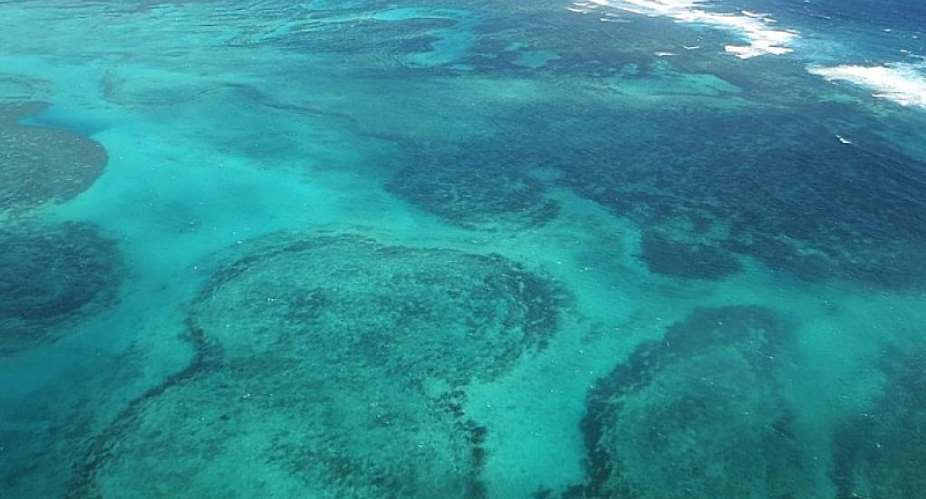Coral bleaching has struck the world's southernmost barrier reef, in the Lord Howe Island marine park – a pristine crescent-shaped islet in the Pacific Ocean off the coast of Australia.
While damage to coral caused by climate change in the country is usually linked to the Great Barrier Reef up north in the tropics, this is the first time that heat stress has led to coral bleaching this far south.
Researchers say extreme temperatures experienced over the Australian summer have seen bleaching of up to 92 percent on some of Lord Howe Island's reefs.
Five out of the six sites surveyed suffered some form of coral bleaching, says Tess Moriarty, a PhD candidate from the University of Newcastle, who was among those who spent several weeks in March – the peak month of the year for coral bleaching – documenting reef damage.
With waters a full degree Celsius warmer this summer than usual, Moriarty had been inspecting coral disease on the reefs back in November. She returned to Lord Howe last month to follow up.
“It was a bit of a shock. We were expecting the damage to be severe but, when you're faced with it in the water, it's quite confronting,” she says. “Some particular species in the area were 100 percent bleached. It was very sad to see.”
Most of the damage occurred in the lagoon reefs closer to shore, while some of the corals further out, on the reef's far edge, remained healthy.
“The waters closer to shore aren't mixing as much and they're not getting fresh saltwater intakes flushing through, cooling the temperatures and bringing in more nutrients,” Moriarty says.
As part of the survey, the teams – who included researchers from the University of New South Wales, James Cook University and Australia's National Oceanic and Atmospheric Administration – would take coral samples and assess their ability to photosynthesise.
“Corals are an animal, but they have a symbiotic relationship with the algae,” Moriarty explains. “The algae are what feeds the coral and give it its colour, so without the algae the corals are colourless, or bleached, and you can see through to the white skeleton.
“When you no longer have that algae resource and that food intake, you can risk mass coral mortality – so we're looking at how many symbiotic algae are still there to photosythesise, how severe this bleaching is, and what the rate of recovery is likely to be.”
This isn't the first time Lord Howe Island marine park, one of the most isolated ecosystems on the planet, has experienced coral bleaching. On two previous occasions, the corals were able to recover. Researchers say there's good reason to believe the reefs will bounce back once again.
They plan to return to Lord Howe in late April to carry out follow-up surveys.
“Hopefully we'll see more recovery than mortality,” Moriarty says, adding the island is sometimes referred to as the “western Pacific Galapagos Islands” thanks to the high number of endemic and unique species that call it home.
“A lot of these corals can't be found anywhere else in the world.”





 It’s an abuse of power to arrest ECG officials for performing legitimate duties ...
It’s an abuse of power to arrest ECG officials for performing legitimate duties ...
 Unreasonable Actions of GTEC to Collapse Private Universities, Colleges, Institu...
Unreasonable Actions of GTEC to Collapse Private Universities, Colleges, Institu...
 Corruption makes a lot of people rich, happy; NDC, NPP cannot help us – Okyeame ...
Corruption makes a lot of people rich, happy; NDC, NPP cannot help us – Okyeame ...
 GOIL increases fuel prices again, diesel sells GHC14.80, GHC14.99 per litre of p...
GOIL increases fuel prices again, diesel sells GHC14.80, GHC14.99 per litre of p...
 Bawumia will use Ghana’s gold to stabilize the Cedi if voted as President — Ahia...
Bawumia will use Ghana’s gold to stabilize the Cedi if voted as President — Ahia...
 Arrival of state-of-the-art bullet trains signify Ghana’s journey towards enhanc...
Arrival of state-of-the-art bullet trains signify Ghana’s journey towards enhanc...
 Idea behind Performance Tracker is great but shouldn't be limited to election ye...
Idea behind Performance Tracker is great but shouldn't be limited to election ye...
 Election 2024: Bawumia losing 21.8% of NPP’s 2020 Akan votes — Global InfoAnalyt...
Election 2024: Bawumia losing 21.8% of NPP’s 2020 Akan votes — Global InfoAnalyt...
 People are celebrating their 80th birthday and Ghana owes GHS650 billion; who is...
People are celebrating their 80th birthday and Ghana owes GHS650 billion; who is...
 Court issues arrest warrant for Chinese Iron woman, one other over cantonments l...
Court issues arrest warrant for Chinese Iron woman, one other over cantonments l...
